The “21st Century” Parks
Disney’s Animal Kingdom (Orlando, Florida)
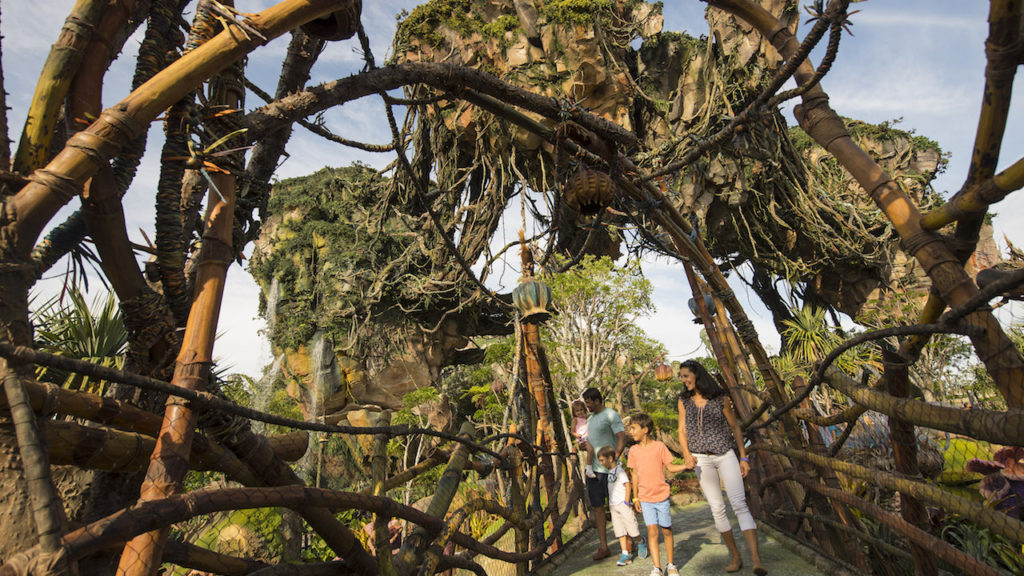
Opened: April 22, 1998
Background: There’s no doubt which theme park shepherded in a new age for themed entertainment design: Disney’s Animal Kingdom. Opened in 1998, it’s fair to imagine Animal Kingdom as a rebuttal of the “Studios” age that had come before.
Designed with a thoughtful intentionality arguably unseen since EPCOT Center, Animal Kingdom is just a thing of beauty. In fact, in one of our Gold & Platinum Member-exclusive Special Features, we dug into Animal Kingdom’s Park Perspective – the philosophies and artistries crafted into the park as only its creative lead, Joe Rohde, could offer.
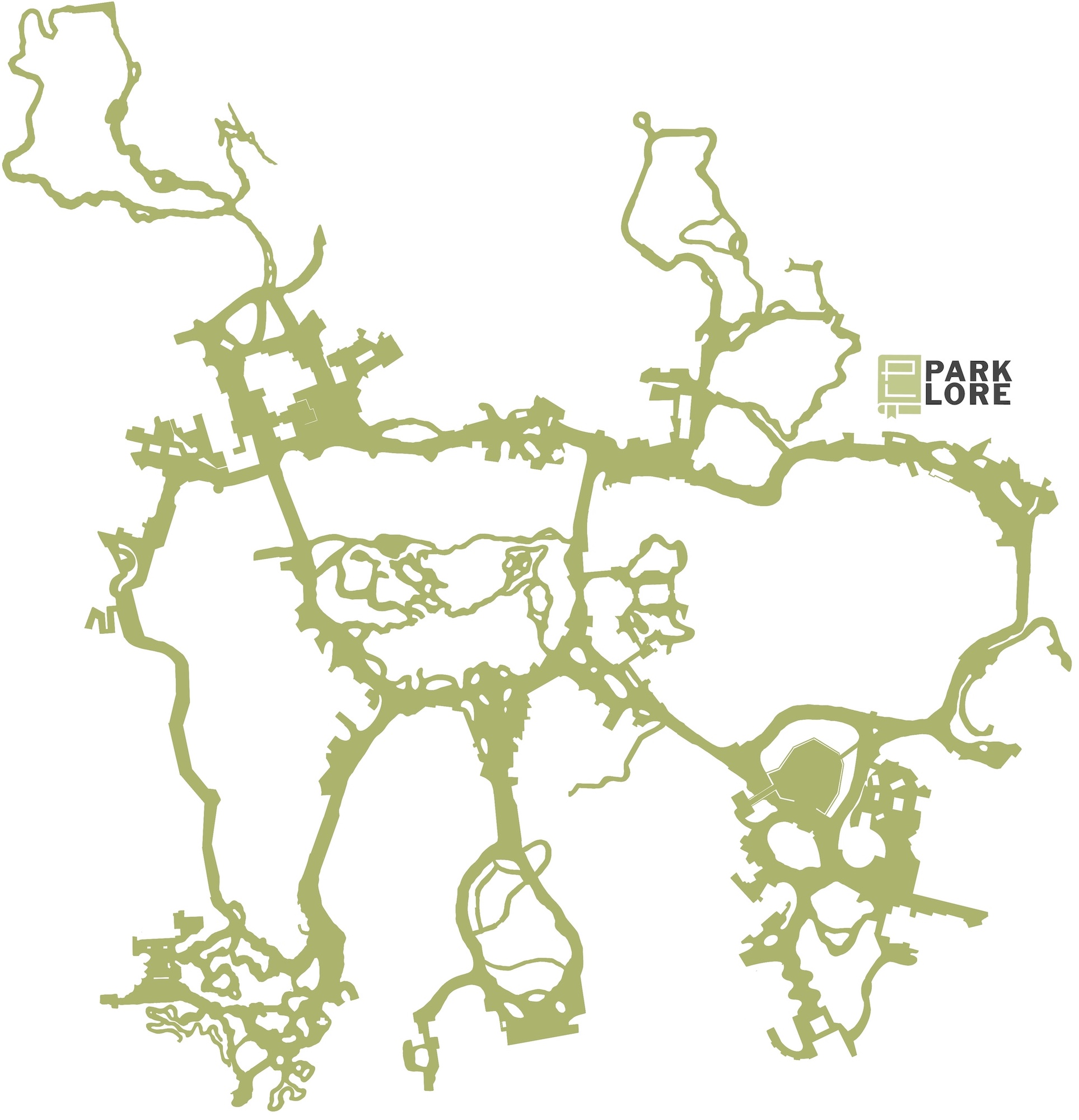
Pathways: Disney’s Animal Kingdom isn’t just beautiful; it’s sprawling. By far the biggest of Disney’s theme parks (though not quite as big as Disney lore claims), the park takes the “hub-and-spokes” layout to the extreme with the entirety of its central Discovery Island serving as a hub, leading off into the Oasis, Dinoland, Asia, Africa, and Pandora: The World of AVATAR.
Given the spirit of exploration and the rewards of discovery and observation inherent in its theme, Animal Kingdom initially didn’t offer park guide maps, encouraging guests to merely explore (including a number of off-roading, all-terrain paths – even hopping crossing streams! – guests could only stumble upon). Obviously, the realities of operating a theme park soon invalidated that, and given the park’s scale, it’s easy to see why maps might be helpful.
Universal’s Islands of Adventure (Orlando, Florida)
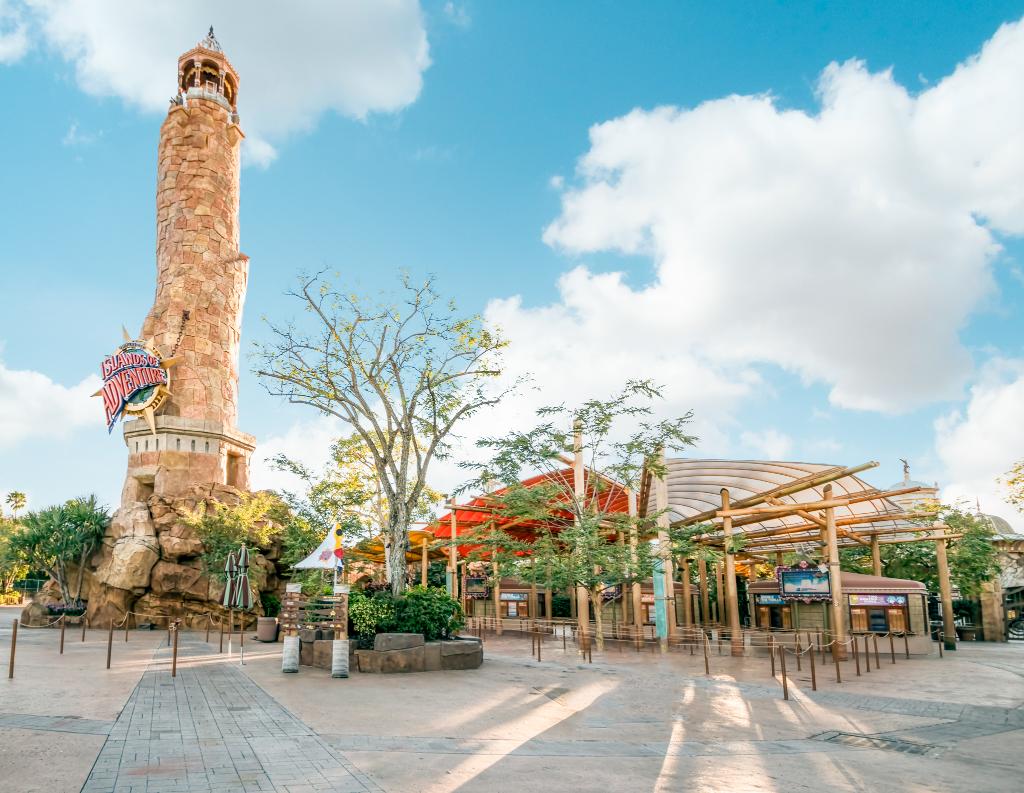
Opened: May 28, 1999
Background: If Universal Studios Florida had been Universal’s first attempt at building a from-scratch theme park using their classic Hollywood tram attractions as inspiration, then just nine years later they set a new precedent with Universal’s Islands of Adventure.
The park’s decade-long concepting saw it take many forms, but ultimately, Islands of Adventure was born at just the right time – after the “Ride the Movies” era but before the “IP Wars” of today. The result is that the park “invented” the idea of lands dedicated to a single intellectual property, but based only one of them – Jurassic Park – on a blockbuster film. Otherwise, Universal ignored movies and instead brought to life stories – the intergenerational, timeless, literary worlds of comic books, Sunday funnies, pulp adventures, myths & legends, and picture books. (Honestly consider: would a park like that ever be built today?)
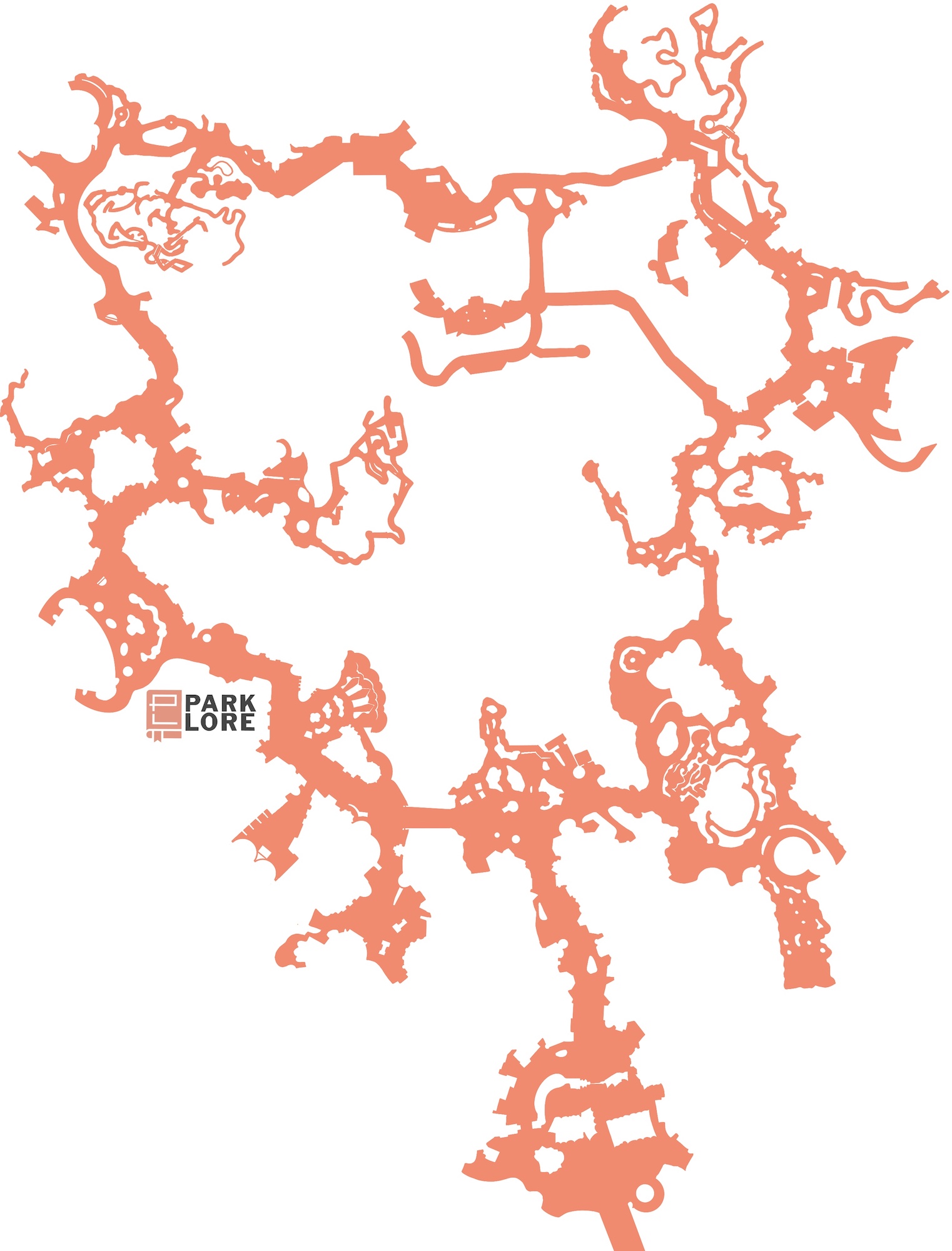
Pathways: Islands of Adventure’s layout tells a story all its own. Roller Coaster Philosophy’s Jeremy Thompson notes how the park essentially took the “hub-and-spokes” layout, then turned the “hub” into negative space (a lagoon) rather than positive (a castle or plaza). The best description of the park, then, must be a “wheel,” but despite its obvious touring plan, Islands of Adventure is packed with secrets, side quests, and “hidden gems” that beg to be explored.
Though a clear midway serves as the “wheel’s” highway, paths diverge and regroup; each “island” hides a quiet, reflective coastline; bridges serve as cinematic “flash cuts,” instantly transporting guests between literary worlds like stepping into a new section in a bookshop – pulp adventure, picture books, myths and legends, magic, Sunday funnies, comic books… Even the park’s Main Street-equivalent, Port of Entry, is “bent,” hiding the park’s “reveal” and encouraging exploration rather than serving as a straightaway with a weenie to race toward.
The clear downside to the “islands” layout? Since the park’s “Island Skipper Tours” stopped offering boat rides from Port of Entry to Jurassic Park in 2003, the only way to get from one spot in the park to any other is to rejoin the main pathway and take the “wheel” all the way around. Gazing across the lagoon at a destination, it can even be hard to know if traveling clockwise or counterclockwise will get you there in fewer steps!
Still, the “IP islands” concept and layout are so obvious in retrospect, Universal has re-used it as the backbone of its “Studio” parks in Singapore and Beijing. That said, both of those parks replace the timeless stories of Islands of Adventure with blockbuster movies du jour – lands themed to Despicable Me, Transformers, Kung Fu Panda, and Jurassic World rather than literary, intergenerational properties like Dr. Seuss, Marvel comics, and Greek myths. That leaves Islands of Adventure a one-of-a-kind, very, very good park that would never be built today – and that’s something worth celebrating and preserving…
Disney California Adventure (Anaheim, California)
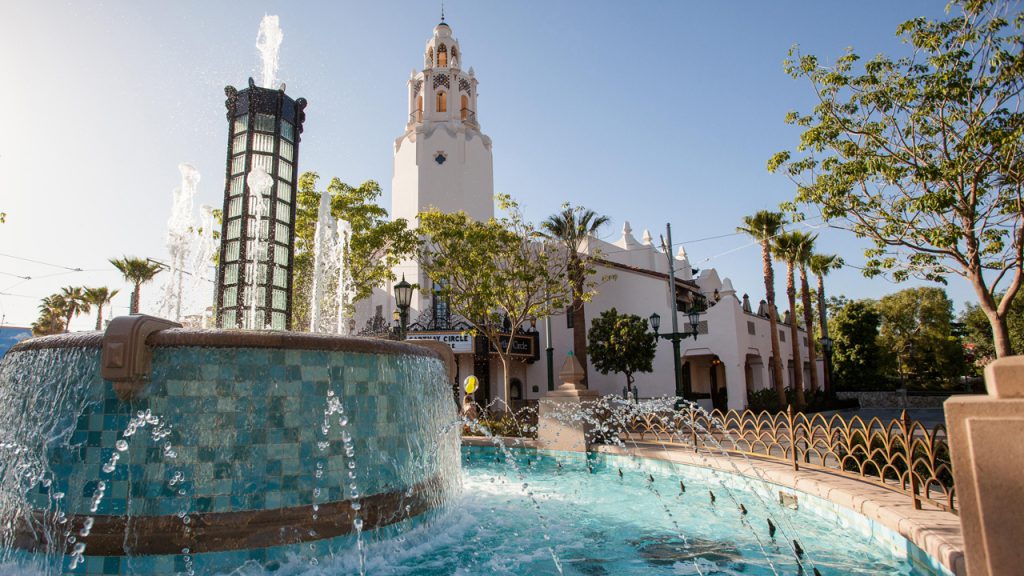
Opened: February 8, 2001 and June 15, 2012
There’s no Disney Park on Earth that’s changed so immensely in such a short period of time as Disneyland’s second gate. We told the definitive story of the park’s rocky start and its twenty years of transformation in our two-part Disney California Adventure feature. The park’s current form – what we might call, “DCA 3.0” – is the result of nearly $3 billion in cumulative reimaginings that have refreshed lands (Pacific Wharf and Hollywoodland), fully redesigned lands (Grizzly Peak Airfield, Paradise Gardens, and Pixar Pier) and built entirely new lands (Buena Vista Street, Cars Land, and Avengers Campus).
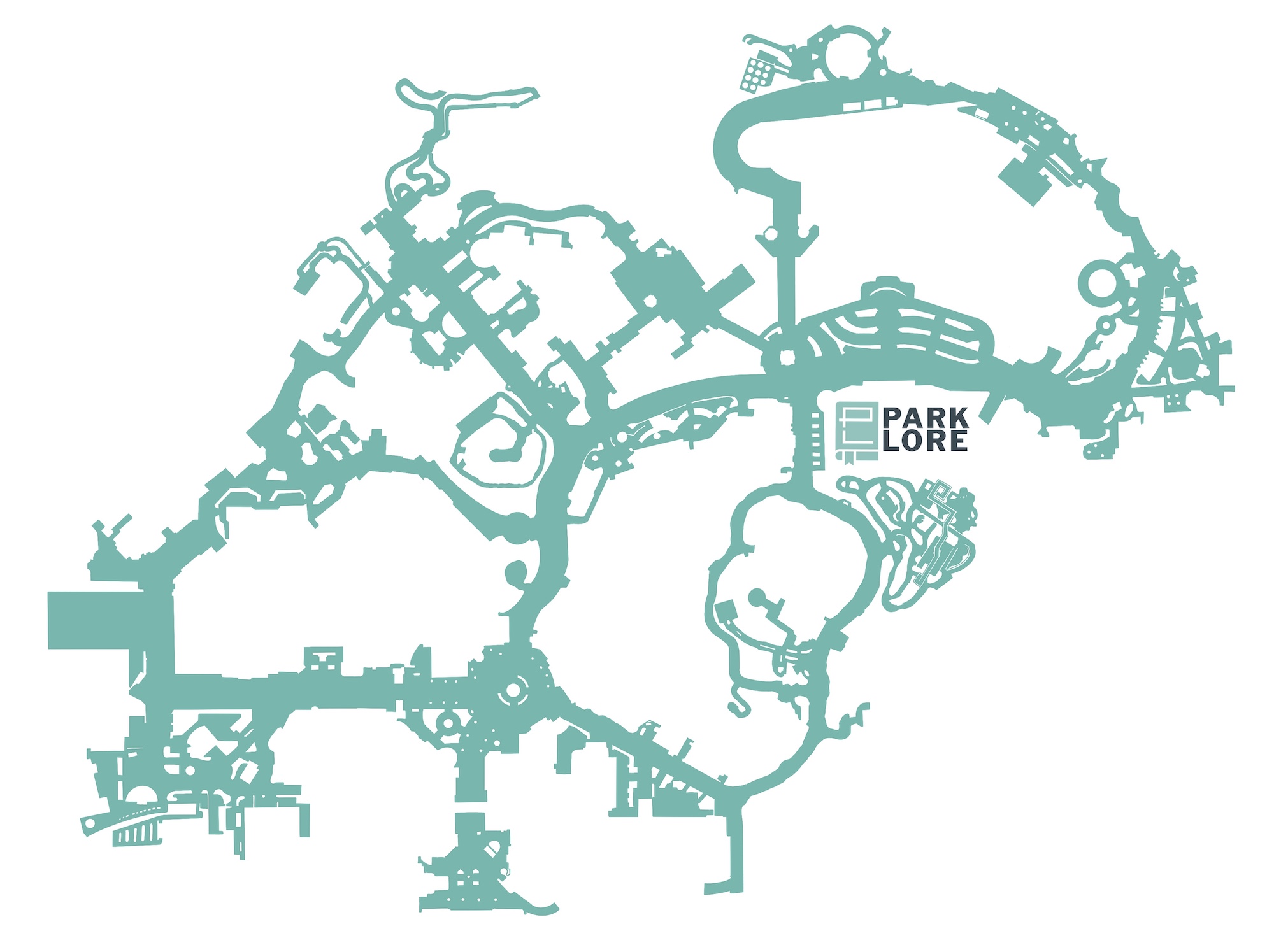
Pathways: Initially, all of Disney California Adventure rested along a “figure-8” formed around Grizzly Peak and Paradise Bay with Hollywood Blvd. merely jutting off as a dead-end. The many new lands grafted onto the park have buried any intuitive sense of that. Theoretically, the park has two mini-hubs – “Carthay Circle” as one and another further into the park in front of Pixar Pier’s entrance. But even still, this is surely not a “hub-and-spokes” park, either. So… what is its organizing element?
One of the ingenious features built into the park from day one was its “Performance Corridor” – the wide, parade-ready path that stretches from the far side of Hollywood Land, curves south of Grizzly Peak, and flows around Paradise Bay. The Performance Corridor remains the park’s “spine,” with later additions grafting onto it. Returning to that Corridor can bring guests from the deepest pockets of the park back to the entrance with surprisingly few steps! That’s the park’s organizing element, and unsurprisingly, both Avengers Campus and Cars Land set their main entries along it!
Interestingly, the park’s paths tell another story, too. Walking down Main Street, across the Esplanade, and onto Buena Vista Street brings guests from a turn-of-the-century midwest town to a bustling Los Angeles in the 1920s – quite literally, Walt’s journey, and his California Adventure – from the Carnation Cafe to the Carthay Circle Theater. That makes Disneyland and Disney California Adventure feel linked, like the complements they’re meant to be. So even if it’s taken a whole lot of time, money, and resourcefulness, the unusual connections in California Adventure make it a pretty good park.


